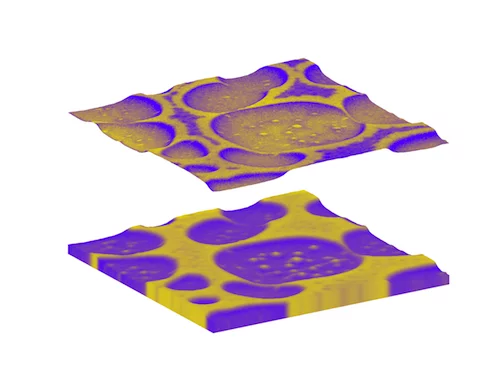New method allows important insights into polymer semiconductors
Semiconductors made from polymer materials are becoming increasingly important for the electronics industry – as a basis for transistors, solar cells or LEDs – showing important advantages when compared to conventional materials: they are lightweight, flexible and very cheap to produce. Usually, they consist of more than one substance as they get their particular electric properties only when several materials are blended. But in order to find the optimal material, one has to know how different polymers mix together (or don’t) and how the various components contribute to the properties of the material. Researchers from the Paul Scherrer Institute (Switzerland) and the University of Cambridge (United Kingdom) have developed a method that allows them to determine the detailed structure of the material – both in the bulk and on the surface. The investigations were performed at the Swiss Light Source SLS of the Paul Scherrer Institute.
Read full article
Reference
Benjamin Watts, Christopher R. Mc Neill, Macromolecular Rapid Communications, 2010, DOI: 10.1002/marc.201000269Contact
Dr. Benjamin WattsSwiss Light Source, Paul Scherrer Institut, 5232 Villigen PSI, Switzerland
Email: benjamin.watts@psi.ch
